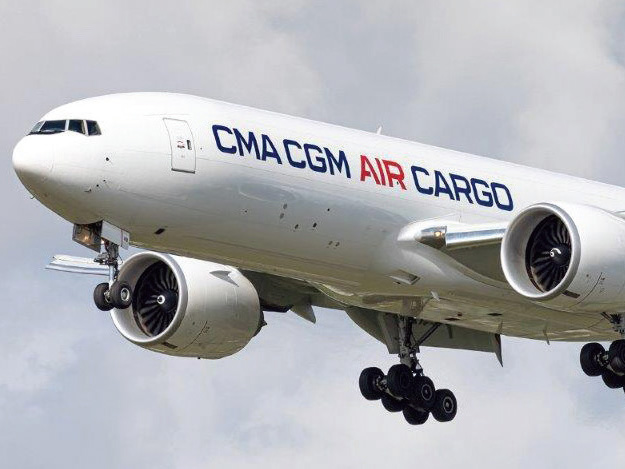Container ocean carriers have moved into air freight. Is a flight of fancy or a long-term strategy?
Europe’s three leading ocean shipping groups, Maersk, CMA CGM and MSC, have pursued a fast-paced strategy in recent years which has transformed them from simple “box” carriers for international trade into something approaching ‘one-stop shop’ logistics players.
Such diversification moves were triggered largely by COVID 19 and the resulting supply chain chaos in its wake, which in turn brought into sharp view the need for both ocean and air freight capabilities in shipping goods around the world.
The unprecedented disruption to box ship schedules engendered by the pandemic sent freight rates skyrocketing, generating ‘super’ profits for the carriers and giving them the financial clout to set up airlines, purchase and lease aircraft and acquire forwarders, LSP and e-commerce fulfilment specialists.
The move into air freight, with the operation of wide-bodied freighters on major inter-continental trade lanes, was, as one of the Big Three put it, designed to offer “customers a new range of comprehensive, agile and customized solutions”.
But it was also driven by the attraction of spectacular yields that could be had as rates, like those in ocean freight, hit record highs during the pandemic.

Normalized Post-Pandemic Airfreight Market
However, Maersk, CMA CGM and MSC are today operating in a ‘normalized’ air freight market, radically different from the one they entered. The airlines they set up are now confronted with tougher market conditions, with capacity once again outstripping demand.
With carriers’ core ocean shipping business posting losses as rates fall amid a supply and demand imbalance, cost-cutting is high on the agenda after what have been golden years in the sector. Air freight, being a marginal activity within their portfolio of services, could be considered a prime area for the axe to fall.
“In general, when companies are making a lot of money they tend to look more at diversifying services in their portfolio. But when markets are tougher, they tend to move closer to the core again because the pressure on them is building,” Niall van de Wouw, chief airfreight officer at market intelligence platform, Xeneta, told AJOT.
“I can well imagine that the CFOs of these carriers are scrutinizing everything that is not truly ocean core. So yes, the air freight market has changed but just as importantly, the ocean freight market has changed too.”
Maersk, CMA CGM and MSC were each approached by AJOT to respond to questions on the outlook for their air freight activities and whether their commitment to the segment remained intact. Even though market conditions are far from ideal, there is no evidence that they are ready to throw in the towel. “Without speculating on what the ocean carriers’ strategy will be going forward, what we can say is that it is very, very difficult to make money from flying freighters,” van de Wouw noted.
“The comparison often made is Cargolux and if you would look at their margins, outside of COVID,…
View the full article free in the AJOT Digital Edition or by Logging in!
View Digital Edition Log In




